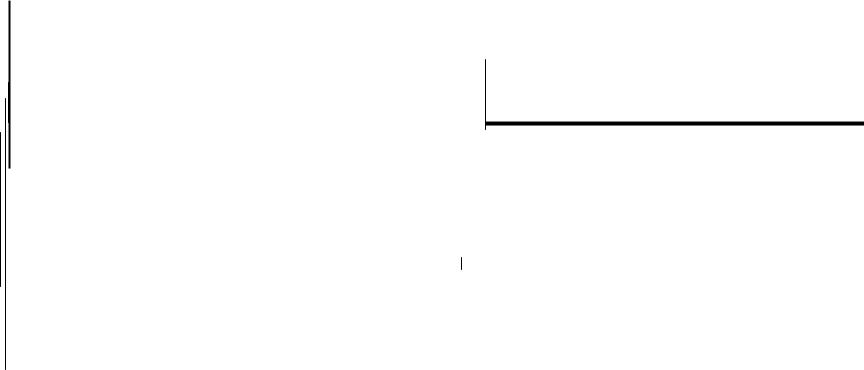
Английская грамматика в тестах_Романова
.pdf
5. |
A relative |
C relate |
|
B relativity |
D relatively |
6. |
A induced |
C inducement |
|
B induce |
D inducing |
7. |
A severely |
C severe |
|
B severity |
D severing |
8. |
A danger |
C in danger |
|
B endanger |
D dangerous |
9. |
A effectiveness |
C effective |
|
B effects |
D effectively |
Test 64 |
Although several cane-cutting machines have been used with some (1) ___ , most of the sugarcane in the world is
(2) ___ by hand. The cutting instrument most common-
ly used (3) __ of a large steel blade 50 cm (4) _____ and
about 13 cm (5) ___ , (6) ___ with a small hook on the back, and set into a wooden handle. Cane is cut at or near the surface of the ground, stripped of its leaves by the knife hook, and trimmed at the top near the last
(7) ___joint. The cane is then piled in rows along the ground until picked up by hand or machine, tied in bun dles, and transported by cart or truck to the sugar facto ry, where the (8) ___ mill extracts the sugar from the cane.
1. |
A succeed |
C success |
|
B successful |
D succeeding |
2. |
A harvesting |
C harvested |
|
B harvester |
D harvest |
3. |
A constituent |
C constituency |
|
B consists |
D consisting |
4. |
A length |
C longer |
|
B lengthen |
D long |
5. |
A wide |
C width |
|
B widen |
D widening |
6. |
A equipment |
C equipped |
|
B equipping |
D equips |
7. |
A mature |
C maturating |
|
B maturate |
D maturely |
8. |
A grind |
C ground |
|
B grinding |
D grindable |
Test 65
Quebec has several problems with (1) . Because of its location at the northeast corner of North America, winds from the southwest carry pollution to the (2) ___. Acid rain has (3) __ damaged (4) ___ lakes and some forestlands, with maple trees the hardest hit. About half of the sulfur compounds that (5) ___ acid rain originate at power plants and industrial sites in the United States, a quarter originate in Ontario, and a quarter originate within Quebec. In (6) ___ , large parts of the St. Lawrence Riv er are polluted by fertilizer runoff and toxic industrial dis
charges despite federally (7) |
__ regulations to improve |
the (8) ___ of the water. |
|
1 A pollute |
C polluting |
B polluted |
D pollution |

2. |
A provincialism |
C province |
|
B provincial |
D provincially |
3. |
A seriously |
C seriousness |
|
B serious |
D more serious |
4. |
A numerously |
C numerous |
|
B numerate |
D numerated |
5. |
A causality |
C causative |
|
B causally |
D cause |
6. |
A additional |
C add |
|
B addition |
D added |
7. |
A enforced |
C force |
|
B forcing |
D enforce |
8. |
A qualitative |
C qualifying |
|
B quality |
D qualify |
Test 66
A (1) ___ lighthouse is a structure from which light is projected at night, or which serves as a marker by day, (2) ____ ships (3) ____ in coastal waters. Light houses are constructed at important points on a coast line, at (4) to harbours and estuaries, on rocky ledges or reefs, on islands, and even in the water. Light houses help (5) ___a ship's location, warn ships of
(6) ___ hazards, and (7)____ them that land is (8) ____. Lighthouses differ from smaller beacons in that a light house includes (9) ___ quarters for a lighthouse keeper.
Today, however, most lighthouses use automatic elec tric lights that do not (10) ___ a full-time resident op erator.
1. |
A commonly |
C commonness |
|
B common |
D commoner |
2. |
A guided |
C guidance |
|
B to guide |
D guideline |
3. |
A sailer |
C sails |
|
B sailor |
D sailing |
4. |
A enter |
C entrances |
|
B entrant |
D entered |
5. |
A identify |
C identification |
|
B identifying |
D identified |
6. |
A potentially |
C potency |
|
B potential |
D potent |
7. |
A notifying |
C notify |
|
B notification |
D notified |
8. |
A nearer |
C nearness |
|
B nearly |
D near |
9. |
A living |
C alive |
|
B live |
D life |
10. A requirement |
C required |
|
|
B require |
D requiring |
Test 67
In 1963 the ZIP (Zoning Improvement Program) code system was (1) ___ to simplify the patterns and (2) ____of mail (3) ___ . The ZIP code is a five-digit number used on the last line of the address (4) ___ the name of the city

and state. The first (5) ___ , from 0 to 9, stands for one of the ten main geographical areas into which the United States and its (6) __ are (7) ___ . The next four digits mark off (8) __ farther by subdividing the main area; the first three digits together (9) ___ a sectional or metropol itan area, with the next two numbers (10)___ an (11) ___
or branch post office. Use of ZIP codes is (12) ___ .
1. |
A introduced |
C introduce |
|
B introduction |
D introducing |
2. |
A procedural |
C procedures |
|
B procedurality |
D procedurally |
3. |
A distribution |
C distribute |
|
B distributor |
D distributed |
4. |
A follow |
C followed |
|
B following |
D follower |
5. |
A digitalization |
C digital |
|
B digitally |
D digit |
6. |
A possessive |
C possessions |
|
B possesses |
D possess |
7. |
A divide |
C dividing |
|
B divided |
D division |
8. |
A local |
C locally |
|
B localities |
D localized |
9. |
A represent |
C representation |
|
B representative |
D represents |
10. |
A specify |
C specifying |
|
B specification |
D species |
11. |
A disassociated |
C associating |
|
B association |
D associated |
12. |
A voluntary |
C volunteer |
|
B voluntarily |
D voluntarism |
Test 68
The first globes were built by ancient Greeks. The earliest known globe was said to have been (1) ___ by the (2) ___ Crates about 150 BC. An ancient celestial globe that still (3)___ was made about 150 AD as part of a (4) __ , called the Farnese Atlas, in the Naples Museum, Italy. The oldest (5) ___ terrestrial globe was built in Germany, in 1492. This globe does not show the Americas. As new (6) ___ were discovered in the 16th and 17th centuries, globes became more (7) __ . The world's largest globe is the Unisphere, which was built for the 1964 New York World's Fair. This (8) ____
steel globe is 37 m (9) ___ and weighs 408,000 kg, including its base.
1. |
A construct |
C constructing |
|
B constructive |
D constructed |
2. |
A scholarship |
C scholar |
|
B scholarly |
D scholastic |
3. |
A existing |
C existence |
|
B exists |
D existed |
4. |
A sculptor |
C sculpt |
|
B sculpture |
D sculptural |
5. |
A existing |
C exists |
|
B existed |
D existence |

6. |
A land |
C lands |
|
B landless |
D landed |
7. |
A accuracy |
C accurately |
|
B accurate |
D accuracies |
8. |
A stain |
C staining |
|
B stained |
D stainless |
9. |
A cross |
C crossing |
|
B crossed |
D across |
Test 69
The Louvre, the national art museum of France and the palace in which it is (1) ___ , is located in Paris, on the right bank of the Seine River. The structure, until 1682 a (2) __ of the kings of France, is one of the largest palaces in the world. It (3) ___ the site of a 13th-century fortress. The building of the Louvre was begun in 1546.
(4) ___ were made to the structure during the (5) ___ of almost every French (6) ___ . Under Henry IV, in the early 17th century, the Grande Galerie, now the main picture gallery, which borders the Seine, was (7) ___ . By
the mid-19th century the vast complex was built; (8) ___
more than 19 hectares, it is a masterpiece of architectural design.
1. |
A house |
C housed |
|
B home |
D homeland |
2. |
A residence |
C resident |
|
B residential |
D residence |
3. |
A occupies |
C occupancy |
|
B occupying |
D occupant |
4. |
A Add |
C Additions |
|
B Adds |
D Adding |
5. |
A regal |
C reigned |
|
B reigns |
D regale |
6. |
A monarchic |
C monarch |
|
B monarchal |
D monarchy |
7. |
A completing |
C complete |
|
B completion |
D completed |
8. |
A covering |
C covered |
|
B cover |
D coverage |
Test 70
Children's games are recreational (1) ___especially enjoyed by children. Any attempt (2)___ them is diffi cult because of their great number and (3) ___ — chil dren enjoy active games as well as passive ones, games of skill and those of chance, games (4) ___ indoors or outdoors, and games for one child alone or for two or more. Some games are structured, that is, played ac cording to formal rules and generally with (5) __ equip ment; others are unstructured, "made up" (6) as
the game progresses (and often prefaced with the sug gestion, "Let's (7) ___ "). Word games and guessing games — (8) ___lotto, questions, and charades — are also popular.
1. |
A active |
C activities |
|
B activists |
D activism |
2. |
A classifying |
C to classify |
|
B classification |
D classified |

3. |
A variant |
C varies |
|
B variety |
D varying |
4. |
A playing |
C playable |
|
B play |
D played |
5. |
A prescribable |
C prescribed |
|
B prescription |
D prescribe |
6. |
A spontaneously |
C spontaneous |
|
B spontaneity |
D spontaneousness |
7. |
A pretence |
C to pretend |
|
B pretend |
D pretending |
8. |
A inclusive |
C included |
|
B include |
D including |
Test 71
Scarlet fever is an (1)___ disease, caused by bacteria, which usually enter the body through the nose or mouth; it is transmitted from person to person by direct contact, that is, by sprays of droplets from the respiratory tract of an infected person, or by indirect contact through the use of utensils previously handled by an infected person. The disease most commonly (2) __ children between the ages of two and ten
The typical (3) ___symptoms of the disease are head ache, sore throat, chills, fever, and general malaise. From two to three days after the first appearance of symptoms, red spots may appear on the palate; bright red papilla (4) ___
on the tongue, giving it an appearance commonly called strawberry tongue. A characteristic skin eruption appears on the chest and usually spreads over the entire body except the face. The rash fades on pressure. The fever, which frequently runs as high as 40° to 40.6°C, generally lasts only a few days
but may (5) ___to a week or longer. The rash usually fades in (6) ___ a week, and at that time the skin begins to peel.
Scarlet fever may be (7) ___ by other diseases, for example, by pneumonia. Since the (8) ___ of penicillin, however, most instances of scarlet fever can be (9) ___
without the (10) ___ of permanent after-effects.
1. |
A infectious |
C infect |
|
B infection |
D infected |
2. |
A affection |
C affects |
|
B affected |
D affecting |
3. |
A initials |
C initialize |
|
B initial |
D initialized |
4. |
A emerged |
C emerging |
|
B emerge |
D emergence |
5. |
A extent |
C extended |
|
B extending |
D extend |
6. |
A approximately |
C approximation |
|
B approximate |
D approximated |
7. |
A complication |
C complicated |
|
B complicate |
D complicating |
8. |
A introduce |
C introduced |
|
B introducing |
D introduction |
9. |
A cure |
C curing |
|
B cured |
D cureless |
10. A occurrence |
C occurred |
|
|
B occur |
D occurring |

Test 72
The Great Depression in the United States, the worst and longest (1) ___collapse in the history of the modern industrial world, lasted from the end of 1929 until the early 1940s. Beginning in the United States, the depression spread to most of the world's industrial countries, which in the 20th century had become economically (2) __ on one another. The Great Depression saw rapid declines in the production and sale of goods and a sudden, severe rise in
(3) ___ . Businesses and banks closed their doors, people lost their jobs, homes, and savings, and many depended on (4) __ to (5) ____, In 1933, at the worst point in the depression, more than 15 million Americans — one-quarter ef the nation's workforce — were unemployed.
The depression was caused by a number of serious
(6) ___in the economy. Although the 1920s appeared on the surface to be a (7) ___ time, income was unevenly distributed. The wealthy made large profits, but more and more Americans spent more than they (8) ___, and farm ers faced low prices and heavy debt. The lingering effects of World War I caused economic problems in many coun tries, as Europe struggled to pay war debts and repara tions. These problems (9) ___ to the crisis that began the Great Depression: the (10) ___ U.S. stock market crash of 1929, which ruined thousands of investors and destroyed
(11)___ in the economy. Continuing throughout the 1930s, the depression ended in the United States only when
(12)___ spending for World War II began.
1. |
A economize |
C economically |
|
B economy |
D economic |
2. |
A depend |
C dependence |
|
B dependent |
D dependably |
3. |
A unemployment |
C employ |
|
B unemployed |
D employee |
4. |
A charitable |
C charity |
|
B charitably |
D charities |
5. |
A survival |
C survive |
|
B survived |
D surviving |
6. |
A weaknesses |
C weaken |
|
B weak |
D weakly |
7. |
A prosperity |
C prosperously |
|
B prosperous |
D prosper |
8. |
A earnings |
C earning |
|
B earn |
D earned |
9. |
A contribution |
C contributed |
|
B contribute |
D contributing |
10. A catastrophic |
C catastrophically |
|
|
B catastrophe |
D catastrophist |
11. A confidence |
C confidential |
|
|
B confide |
D confidentially |
12. A mass |
C massively |
|
|
B massiveness |
D massive |
Test 73
Periodicals are publications released on a (1) ___
basis that feature articles, poems, stories, and other types of writing. Many periodicals also (2) __ photographs and drawings. Periodicals that are aimed at a general
audience, such as weekly news roundups, are also called magazines. Those with a more (3) ___ audience, such as publications of (4) ___ organizations, can be termed journals.
(5) ___ , the difference between periodicals and news papers has been a matter of format, publication sched ule, and content. Most newspapers deal with the news of the day and are (6) ___ daily on pulp paper with relative ly large, unbound pages. Periodicals focus on more (7) __ material, and when they deal with the news they tend do so in the form of (8) __ or commentaries. For centurie periodicals generally (9) ___on finer paper than newspa pers, with smaller (10) ___ pages, and at intervals long er than a day (weekly, every two weeks, monthly, quar terly, or even annually).
In the 1990s, with the (11) ___of the Internet, publishers began to release newspapers and periodicals on line. This development (12) __ the line between the two forms because the general format of online newspa pers and periodicals is (13) ___ , and the publication sched ule of both forms became more (14) ___ . For example. many newspaper publishers update their online versions throughout the day, and some online periodicals do the same Despite these technological changes, the two forms differing emphasis in choice of content remains a (15) ___
factor.
1. |
A regularity |
C regularly |
|
B regular |
D regulate |
2. |
A inclusion |
C including |
|
B inclusive |
D include |
3. |
A narrow |
C narrowing |
|
B narrowed |
D narrowness |
4. , |
A scholarly |
C scholarship |
|
B scholar |
D scholastic |
5. |
A History |
C Historic |
|
B Historically |
D Historical |
6. |
A issue |
C issued |
|
B issuance |
D issuing |
7. |
A specialize |
C specialized |
|
B specialization |
D specializing |
8. |
A summarize |
C summaries |
|
B summarizing |
D summarized |
9. |
A appear |
C appearing |
|
B appearance |
D appeared |
10. |
A bind |
C binding |
|
B bound |
D binder |
11. |
A growth |
C grow |
|
B growing |
D grown |
12. |
A blur |
C blurry |
|
B blurring |
D blurred |
13. |
A similarity |
C similar |
|
B similarly |
D similize |
14. |
A flex |
C flexibility |
|
B flexible |
D flexibly |
15. |
A distinguish |
C distinguished |
|
B distinguishing |
D distinguisher |
Test 74
Throughout history, people have been (1) __ by life underwater, and the Professional Association of Dive In structors (2)___ that there are now 6 million active divers worldwide. They (3) __ in many different types of div ing, of which wreck, cave, (4) ___ , and military diving are just a few. The most common form of diving is sport diving, or (5) ___diving, which is practiced at depths of less than 130 ft. From these depths, divers can make a
(6) ___ ascent to the surface. Diving beyond this limit requires (7) __ training.
Because popular dive sites such as coral reefs and wrecks are (8) ___ not near land, most diving is done from boats. In some locations, however, divers can enter the watei from shore. On a typical outing, the divers decide before hand how long they will remain underwater and how (9) ___
they will descend. While the divers are underwater, at least one person serves as a spotter by remaining on the boat or on shore. All groups, whether diving from a boat or from shore, are (10) ___ to fly a diver down flag (a red flag with a white diagonal slash) to alert boaters that people are underwater.
In general, divers seek locations where the water is clear, the temperatures warm, and the marine life (11)____ . Divers often choose to visit areas with coral reefs because they are colourful and (12) ___with life, and provide shelter for many types of fish. The Caribbean is the most popular (13) __ in the world. Parts of the region are designated as marine parks or sanctuaries. Because they are protected from fishing and other human activity, these locations boast abundant aquatic plant and animal life. Similar protected areas (14) ___throughout the world, and the South Pacific, the Indian Ocean, and the Red Sea are common dive destinations.
1. |
A fascination |
C fascinated |
|
B fascinating |
D fascinate |
2. |
A estimating |
C estimates |
|
B estimation |
D estimated |
3. |
A engage |
C engaging |
|
B engagement |
D engaged |
4. |
A commerce |
C commercialise |
|
B commercial |
D commercially |
5. |
A recreation |
C recreated |
|
B recreate |
D recreational |
6. |
A straightforward |
C straightened |
|
B straighten |
D straight |
7. |
A advance |
C advancement |
|
B advanced |
D advancing |
8. |
A typically |
C typical |
|
B type |
D typifying |
9. |
A deep |
C depth |
|
B deeply |
D deepen |
10. A require |
C requirement |
|
|
B required |
D requiring |
11. A plenty |
C plentiful |
|
|
B plenteously |
D plentifully |
12. A densely |
C densing |
|
|
B density |
D dense |

13. |
A destine |
C destination |
|
B destined |
D destiny |
14. |
A exist |
C existing |
|
B existence |
D existed |
Test 75 |
The Canary Islands or Canaries is the group of is lands, the (1) ___ region of Spain, in the Atlantic Ocean, off the north-western coast of Africa, (2) ___ the provinces of Las Palmas and Santa Cruz de Tenerife. Their capitals are, (3) ___ , Las Palmas on Grand Canary and Santa Cruz de Tenerife on Tenerife Island; the cities also serve as dual and (4)___ capitals of the region. The chief islands of the group, in (5) ___order of size, are Tenerife, Fuerteventura, the (6) ___to the African mainland, Grand Canary, Lanzarote, La Palma, Gomera, and Hierro. In addition, several barren islets are (7) ___ in the group The Canary Islands are of volcanic (8) ___ and are noted for their scenery and mild, dry climate, which makes them an ideal site for astronomical (9) ___. Precipitation (10)___ mainly during the winter season. In areas below. about 400 m elevation, the (11) ___is typically northern African; characteristic (12) ___ are the date palm, dragon tree, and cactus. Growing at higher levels are laurels. holly, myrtle, eucalyptus, pine, and a variety of flower ing plants. Farming and fishing are the principal indus tries. The volcanic soil of the Canaries is extremely (13)
______________________________________________
.
The islands have no rivers, however, and severe drought.' are common; (14)___ irrigation is therefore a (15) ___
in most cultivable areas. Among important crops are bananas, citrus fruits, sugar cane, peaches, figs, wine grapes, grain, tomatoes, and potatoes. (16) ___ products include textiles and fine (17) ___. (18) ___ is also impor tant, and the islands are a (19) winter-resort area.
1. |
A autonomy |
C autonomic |
|
B autonomist |
D autonomous |
2. |
A comprise |
C comprisal |
|
B comprised |
D comprising |
3. |
A respect |
C respectively |
|
B respective |
D respecting |
4. |
A alter |
C altering |
|
B alternative |
D alteration |
5. |
A descending |
C descendant |
|
B descend |
D descender |
6. |
A near |
C nearest |
|
B next |
D nearer |
7. |
A included |
C inclusion |
|
B inclusive |
D including |
8. |
A originate |
C origin |
|
B original |
D originally |
9. |
A observer |
C observed |
|
B observation |
D observational |
10. |
A occurrence |
C occurred |
|
B occurs |
D occurring |
11. A vegetable |
C vegetables |
|
|
B vegetation |
D vegetate |
12. A vary |
C various |
|
|
B varied |
D varieties |

13. |
A fertilizer |
C fertile |
|
B fertilize |
D fertilized |
14. |
A artificial |
C artificially |
|
B artificiality |
D artificials |
15. A necessity |
C necessaries |
|
|
B necessary |
D necessarily |
16. |
A Manufacture |
C Manufactured |
|
B Manufacturing |
D Manufacturable |
17. |
A embroider |
C embroiderer |
|
B embroidered |
D embroideries |
18. |
A Tourist |
C Tour |
|
B Tourism |
D Tourer |
19. |
A fashionable |
C fashionably |
|
B fashion |
D fashioner |
Part Four WORD-
BUILDBNG (2)
Directions: Fill in the gaps in the sentences with the adjectives derived from the nouns in brackets according to the model.
Model: Latin is the language of (ancientry) ancient Rome and the (neighbour) neighbouring territory of Latium.
| Test 76 j
Latin is the language of (ancientry) ___ Rome and the (neighbour) __ territory of Latium. With the spread of Roman power Latin was carried to every part of the known ancient world and became the (dominancy) ___
tongue of western Europe. It was the language of scholarship and diplomacy until the 18th century and of the Roman Catholic liturgy until the late 20th century.
The colloquial speech of (culture) __ Romans ap peared in the works of (variety) ___ writers, notably in the comedies of Plautus and Terence, the letters of Cice ro, the Satires and Epistles of Horace, and the Satyricon of Petronius Arbiter. It is characterized by freedom of syn tax, by the presence of (numeration) ___ interjections, and by the (frequency) ___ use of Greek words. This (col loquialism) ___ speech of polite society is not to be con fused with the language of the (poverty)___ and unedu cated classes, which shows a greater disregard for syn tax, a love of new words, and a striving for simplicity, especially in word order.
Latin was the language of letters in (west) ___ Europe in the Middle Ages. Even for the people in (generaliza-
